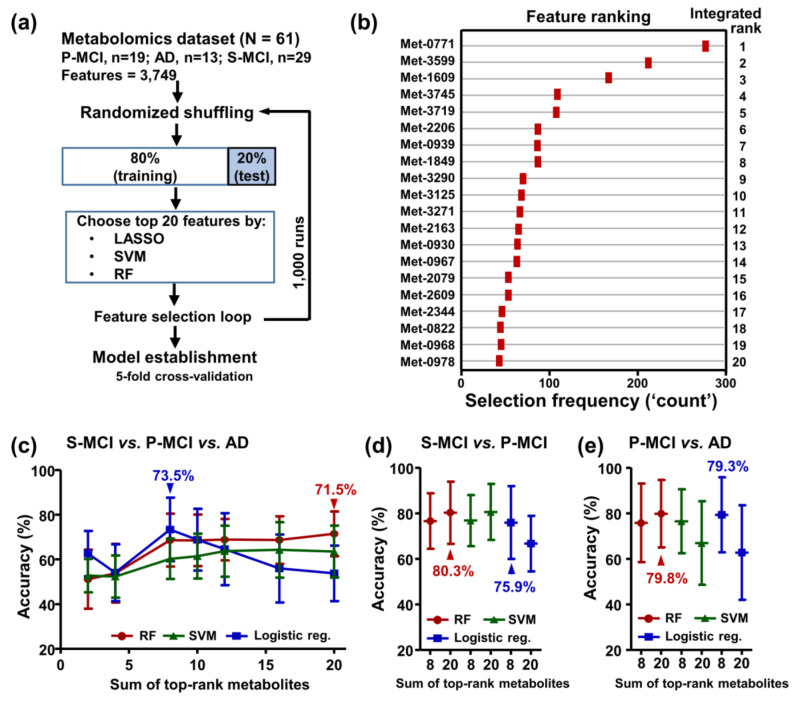Figure 2.
Model development and evaluation for biomarker discovery involving the risk assessment of AD conversion. (a) The workflow of the feature selection used to establish a signature panel for differentiating the S-MCI, P-MCI, and AD patients. In each loop, the dataset was partitioned into a ‘Training Set’ and a ‘Test Set’ and the top 20 most informative features were selected as predictors. The predictive performance of the classifiers was estimated by fivefold cross-validation. (b) The top 20 differentiating features ranked by a combination of the Lasso, RF, and SVM algorithms. (c) Accuracies of classification among the S-MCI, P-MCI, and AD patients using a varying number (2–20) of the top-ranked features based on the RF, SVM, and logistic regression models. (d) Prediction accuracies of binary classification models during which all MCI patients were assigned into either the P-MCI group or the S-MCI group. (e) Accuracies of the binary classification models to predict MCI-to-AD progression. The accuracies (shown as mean ± standard deviation) were determined using fivefold cross-validations. S-MCI, stable MCI; P-MCI, MCI proceeding to AD.

